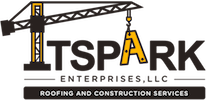Concrete is a widespread and widely-used construction element and serves as the foundational tool in many projects. Frankly, it’s a staple. It is both durable and versatile and can last for a lifetime when treated and maintained correctly. But before handling concrete, it’s essential to understand how to make the best use of it, from safety precautions to pro tips. It can seem complicated at first, but you can feel more confident in fine-tuning your approach to concrete usage if you read more.
Safety first! Before handling any heavy-duty construction equipment, especially when it can be filled with chemicals, it’s imperative to make safety precautions your primary priority. Personal protective equipment, otherwise known as PPE, should be worn and used at all times while handling concrete. Wear nitrile gloves, or ones made of similar material, to keep hands dry and free of skin burns. Handling concrete can create a substantial amount of dust floating in the air, so eye protection is critical. Anti-fog goggles or safety goggles with side shields will block this dust and wet concrete from getting into your eyes. You also want to ensure that all of your skin is covered to avoid contact with concrete, so a long sleeve shirt and pants with the sleeves tucked into gloves and rubber boots makes for an ideal work outfit. Because of all of the dust and fumes that can accumulate from working with concrete, working in a well-ventilated area is necessary for proper air circulation and filtration.
Once you’ve got your protective gear on, you’ll want to make sure that you show up to your construction site well-equipped and prepared with enough concrete mix so you can do it all at once, evenly. Before acquiring the concrete, measure the project volume and area to determine how much concrete you will need.
When it comes time to mix the concrete, you can use a hand or machine, depending on the project’s scale. If you are choosing to mix it by hand, use a mortar tub or wheelbarrow and a shovel to create a divot at the center of the concrete/water mixture. Be wary of the amount of water you use in the mixture. If there is too much water, it will noticeably crack and shrink, but there’s an easy solution: just add more mix! The final consistency should mimic that of a thick paste or cookie dough.
There are some other things to keep in mind. There is a high likelihood that your mixture will develop air bubbles, otherwise referred to as voids, which occur when air gets trapped underneath the layers of concrete and water. Tap around the mixture with a rubber mallet to get rid of air bubbles and to smoothen the solution. After your project dries, sand it down with sandpaper, seal it with a sealer for a glossy finish, and protect it from stains.
Some other tools you will want to have on-hand throughout your project include a portable circular saw, hammer, hand cross-cut saw, measuring tape, level and string level, a small sledge, maul, square, and pry bars.
On a final note, beware of the heaviness of concrete. For safety reasons, work on your project with someone else’s help or use a tool that will transport the heavy load for you.
Now that you’ve got a better understanding of some of the ins and outs of concrete, we hope you as a homeowner will have more confidence in your handling of it. Much like any other construction endeavor, having the right tools, both physically and mentally, will provide you with the most success. Preparation and knowledge are the most excellent tools of them all!
TSpark Enterprises, headquartered in Tallahassee, Florida offers a wide range of roofing and construction services. Visit our website or call (850) 766-1340 to get a free estimate and embark on your construction journey today!

